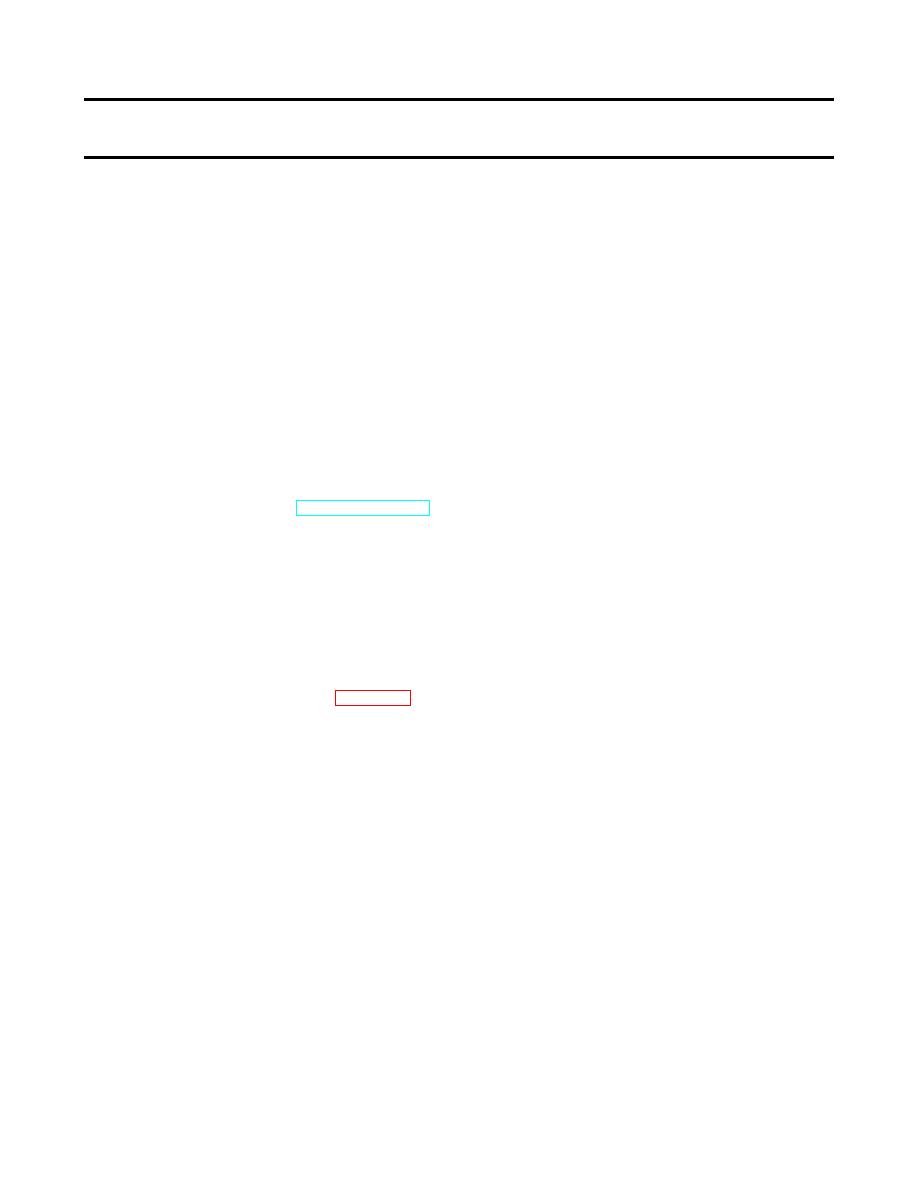
| Tweet |

Custom Search
|
|

|
||
 TM 55-1905-223-24-3
TABLE 2-2. TROUBLESHOOTING-CONT.
MALFUNCTION
TEST OR INSPECTION
CORRECTIVE ACTION
STEP
8.
Check for combustion gases in the cooling system.
a.
Remove pressure cap located on the remote mounted expansion tank.
b.
Install a pressure cap which has had the spring and relief valve removed to allow free flow fromthe
overflow tube.
c.
Attach a hose to the overflow connection.
d.
Put the hose end into a container of water.
e.
Operate the engine until water temperature reaches 180 (80 ).
F
C
f.
Check for bubbles coming from the end of the hose submerged in water.
g.
A continuous flow of air bubbles indicates the following:
(1)
After cooler core leaks.
(2)
Cylinder liner protrusion incorrect.
(3)
Cracked cylinder liner.
(4)
Cylinder head or gasket leakage.
h.
If no bubbles are present, do the following:
(1)
Remove the test equipment.
(2)
Check coolant level and fill if necessary.
(3)
Install the expansion tank pressure cap.
(4)
Operate the engine until it reaches a temperature of 180 (80 ) and check for coolant leaks.
F
C
STEP
9. Check for overconcentration of antifreeze and/or supplemental coolant additives.
Check concentration (TB 55-1900-207-24).
STEP
10. Check if thermostat is incorrect or malfunctioning.
a. Remove the upper radiator hose from the thermostat housing.
b. Install a hose of the same size on the thermostat housing outlet long enough to reach a remote dry
container used to collect coolant.
c. Install and tighten a hose clamp on the housing outlet.
d. Install the end of the hose in a dry container.
e. Operate the engine at rated RPM for one (1) minute.
f. Shut the engine off, and measure the amount of coolant collected in the container.
g. The amount of coolant collected must not be more than 3.3 flud ounces (100 cc).
i
h. If more than 3.3 fluid ounces (100 cc) of coolant is collected, the thermostat seal is leaking.
i. Remove the thermostat (para. 2-28) and inspect as follows:
(1)
Visually inspect the thermostat for damage.
(2)
Suspend the thermostat and a 212 (100 ) thermometer in a container of water. Do not allow
F
C
the thermostat or the thermometer to touch the sides of the container.
(3)
Heat the water.
2-25
|
||
 |
||